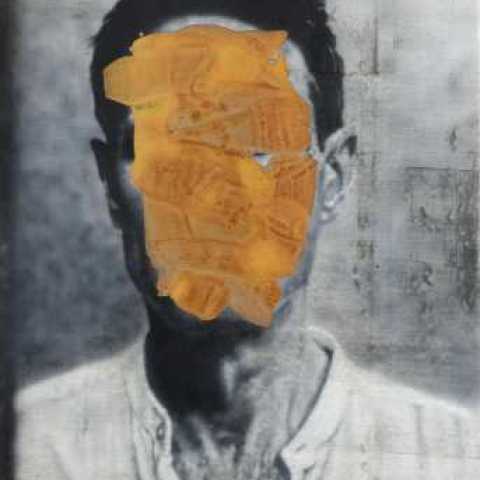Flowers Cork Street
21 Cork St
London
W1S 3LZ
United Kingdom

John Keane’s reputation as a political artist has been established through a sustained artistic inquiry into military and social conflicts around the world, from Northern Ireland to Central America and the Middle East, where he was commissioned as the Official British War Artist of the Gulf War. A new exhibition at Flowers Gallery, Cork Street, will focus on Keane’s most recent series of paintings, which centre on a single self-portrait image. The exhibition of paintings, many obscured and transformed with reactive metallic paints, examines the nature of self reflection, and how experience can inform our understanding of self.
The series Twelve Selves started with the image used for the self portrait Fear No.1, produced in 2013, in which Keane placed himself in the role of a victim of the NKVD, Stalin’s secret police, alongside a series of sourced imagery surrounding the Moscow show trials that took place during the 1930s. Keane has described the series as attempting to “tease out the essence of the most fundamental driver of human reaction, usually found at the root of all violence - fear.”
Over recent years, this particular self-portrait has become a recurring motif, forming the material for both an existential meditation and a period of painterly exploration spanning close to fifty works. Altering the painted or printed portrait using chemical processes, Keane has engaged with the tension between the image and its material substance, allowing the materials to play an active role in determining the image, while retaining the vestiges of its original meaning.
Where previous techniques to alter and obscure found imagery may have been a response to perceived political and media obfuscation - often as an attempt to mute or subvert the message - the latest works provide reflective metaphors for the passing of time (the twelve in the title relating perhaps to hours on the clock or months of the year), the process of aging, and personal transformation. Notions of time are embedded within the labour-intensive hand-painted images, countering the spontaneity of the ubiquitous contemporary snap-shot ‘selfie’. The rapid oxidization of the overlaid metallic paints also attests to a more malleable concept of time, enhanced and manipulated by chemical processes. Despite the incursions on the surface of each painting, the original image, imagined as a response to fear and uncertainty, appears resistant to destruction or attempts to render it silent.
